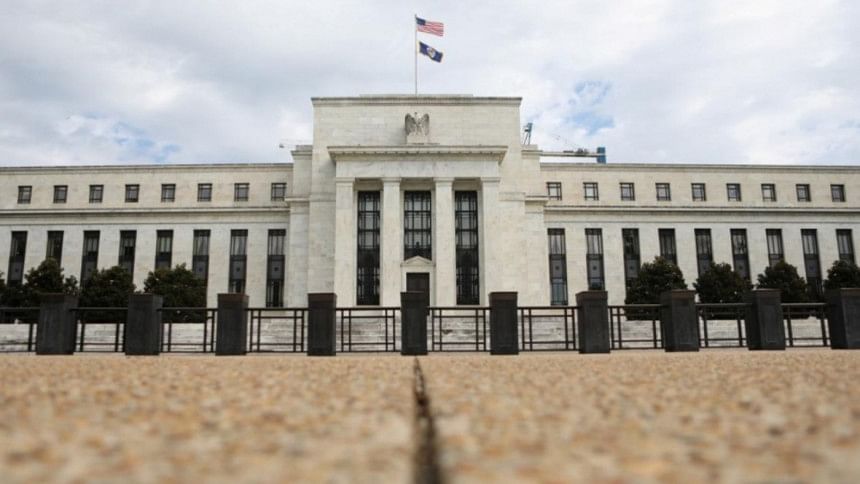What could break under higher-for-longer interest rates?

As the final stretch of the year approaches, there's relief in markets that the sharpest global monetary tightening cycle in decades is finally nearing an end.
Yet, the strain from interest rate hikes has just started to come through and with central banks signalling that rates will likely stay higher for longer, the notion of something "breaking" remains strong.
Here's a look at some pressure points on the radar.
PROPERTY PAIN
Nowhere is the impact of higher rates being felt more acutely than in real estate, still reeling from COVID-19.
A string of German developers have been tipped into insolvency, London's office market is in a "rental recession" as vacancies hit a 30-year high and US banks revealed spiralling losses from property in first half figures and warned of more to come.
Sweden is the hardest hit in Europe since much of its property debt is short-term, making it a harbinger for the region.
Property group SBB, which owns large tracts of property including hospitals and schools, is scrambling to repair its battered finances, marred by a heavy loss and dwindling cash.
The crisis has also sucked in Sweden's biggest residential landlord, Heimstaden Bostad. The $30 billion investor with swathes of homes from Stockholm to Berlin is grappling with a multi-billion dollar funding crunch.
MADE IN CHINA
Property is also at the heart of China's woes and one reason why the world's No.2 economy has shot up investors' worry list.
China Evergrande Group (3333.HK), the world's most indebted developer with over $300 billion in total liabilities, is at the centre of an unprecedented property sector liquidity crisis. Country Garden (2007.HK), China's largest private developer, is battling to avoid a default.
Since property accounts for roughly a quarter of the economy, concerns about the impact for China's already faltering growth and the ripple effects have risen.
Chinese real estate was viewed as the most likely source of a global systemic credit event, according to BofA's September fund manager survey.
MONEY PROBLEMS
Corporate debt defaults have started ramping up, even in typically quiet months.
The number of new corporate defaults globally reached 16 in August, the highest August tally since 2009, according to S&P, the latest sign that corporate stress is building.
"There is lots of talk in the market about corporate stress and hidden leverage, but it has not erupted yet. We still think defaults are coming," said Markus Allenspach, head of fixed income research at Julius Baer.
"We have many zombie companies in the United States and Europe from the low interest rates era, and I cannot imagine how they can survive now with high interest rates."
S&P forecast that defaults among junk-rated European companies will reach 3.75 percent by June 2024 from 3.4 percent in August.
BANKING ON IT
Banking stress has gone down the worry list since the March crisis wrecked havoc.
Big US banks sailed through the Federal Reserve's annual health check in June. The European Central Bank has asked banks to provide weekly liquidity data so it can carry out more frequent checks on their ability to ward off potential shocks as rates rise.
Guy Miller, chief market strategist at Zurich Insurance Group, said banks are in a better position in terms of their capital and liquidity compared with March.
Still, big question marks remain over their future, not least from a global property rout.
"There is still an inherent vulnerability to deposit flight as well as to commercial real estate and other credit exposures for smaller banks," said Miller.
The S&P 500 US regional banks index (.SPLRCBNKS) is down almost 40 percent this year, set for its biggest annual drop since 2008.
Miller noted that European banks are also vulnerable given their bigger size relative to the economy that leaves them more exposed to risks from various pockets.
THAT JAPAN FACTOR
The Bank of Japan has held steadfast to ultra-easy monetary policy but a tighter stance is on the cards. And the risks are rising of a sharp unwind from an era of Japanese cash pumping into everything from US tech stocks to high-yielding emerging market currencies.
Capital Economics expects the BOJ to hike its policy rate in January. It notes that Japanese investors, who have long sought better investment yields elsewhere, own around a trillion dollars of US bonds. They are big holders of European and Australian debt.
Japanese selling of Treasuries could further push up yields -- already at their highest since the global financial crisis. That could hurt equities, which tend to perform worse when investors expect higher returns from low-risk government bonds.
Expect markets to show increased sensitivity to the BoJ in coming months.

 For all latest news, follow The Daily Star's Google News channel.
For all latest news, follow The Daily Star's Google News channel. 








Comments